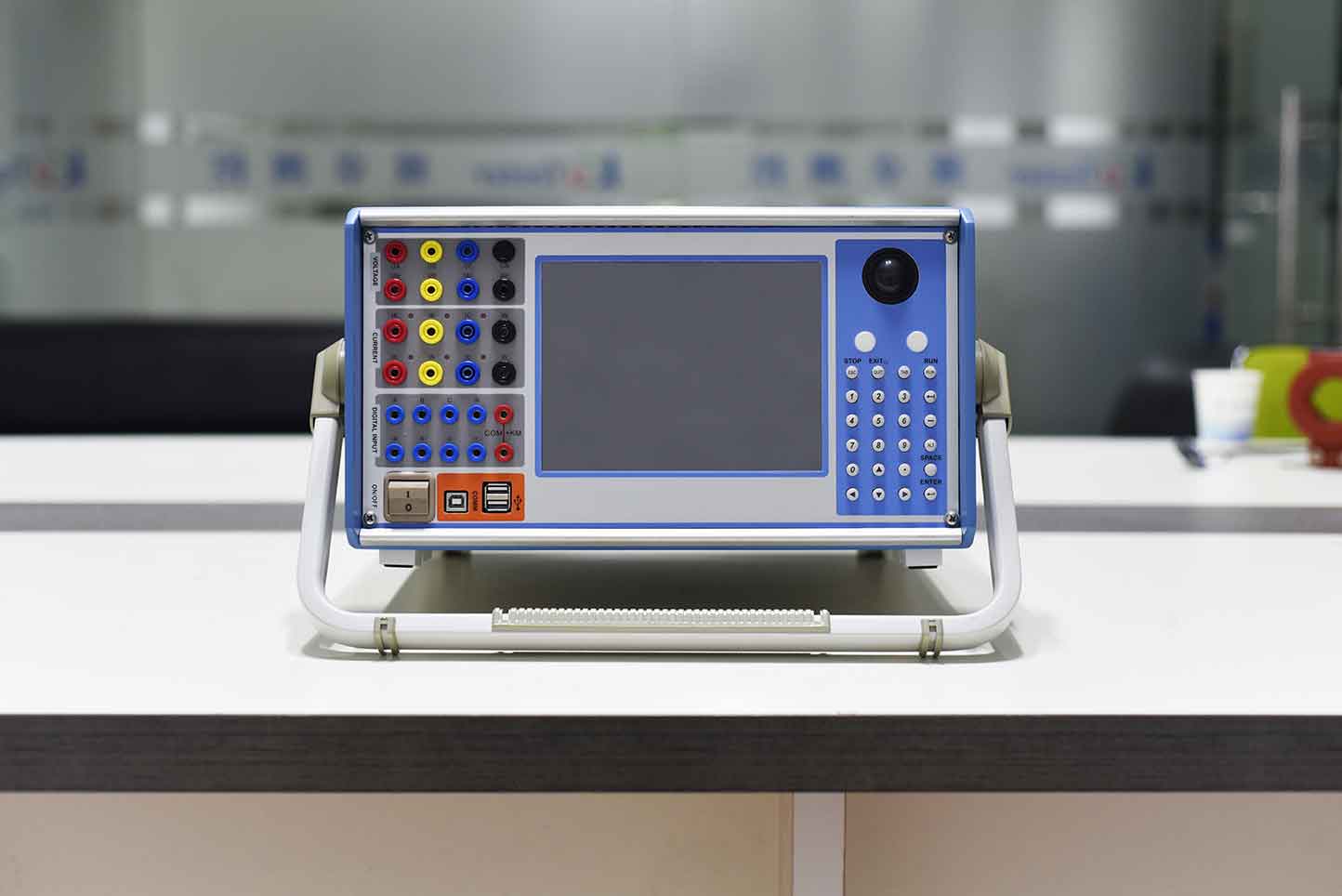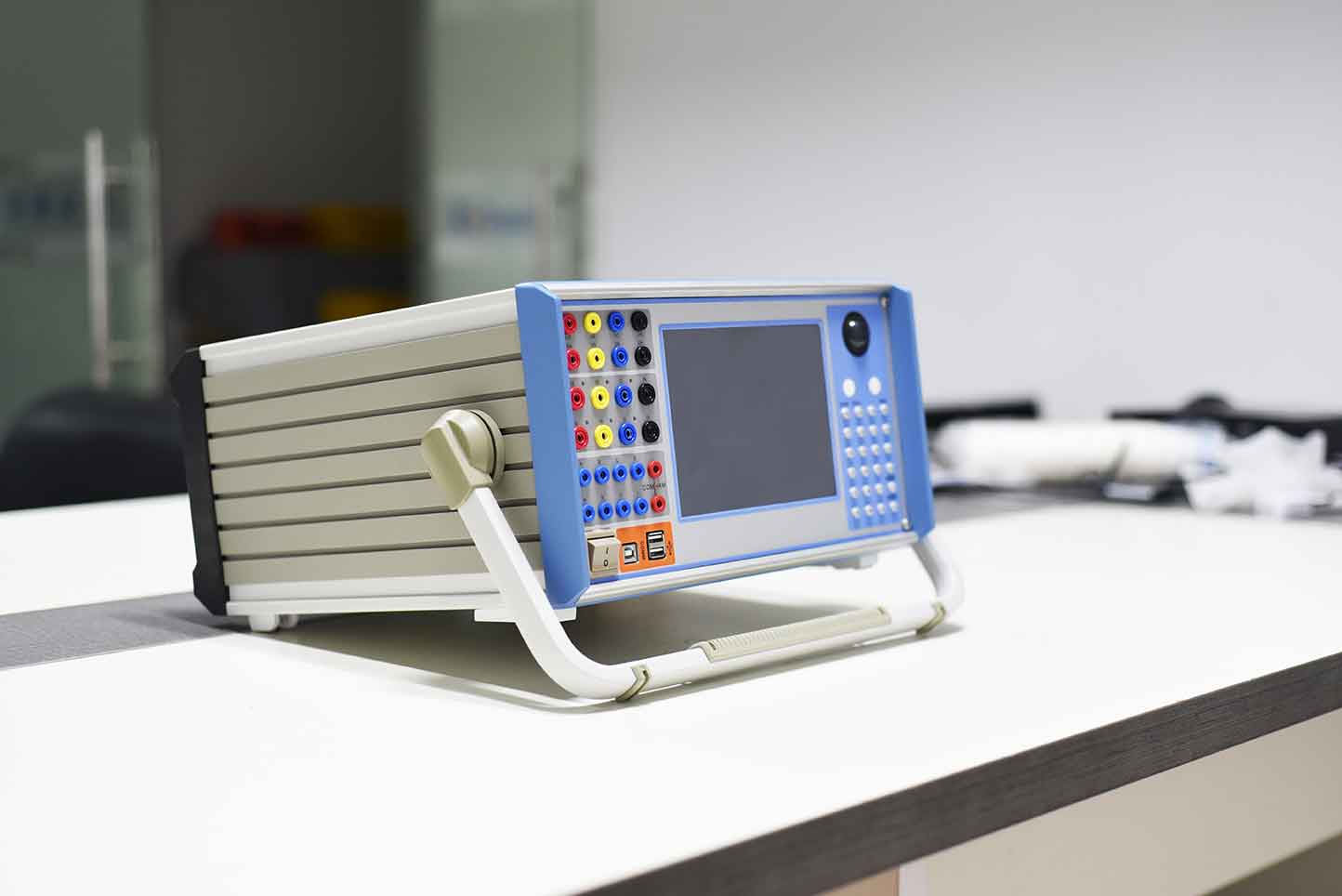The function of a microcomputer relay protection tester is to test backup automatic switching devices and microcomputer differential protection devices. Its functions include:
1. The role of microcomputer relay protection environmental tester in transmission equipment lines
When the Electric power transmission line problem in operation occurs such accidents as strong wind, ice and snow, lightning strike, external force damage, insulation damage, external insulation environmental pollution flashover, etc., the microcomputer relay protection tester device can quickly develop and select targeted tripping fault analysis circuit breaker (switch).
If the fault is non permanent, when the instantaneous fault disappears, the switch is successfully reassembled and the line power is safely restored. If the fault is permanent and the switch reclosure is unsuccessful, the faulty line should be quickly cut off to ensure the power supply of other normal lines.
2. Current protection device
The protection device composed of the characteristic that the line current will significantly affect the current increase due to network faults is called an overcurrent protection control device. When the current of the line fault distance tester reaches the environmental protection setting value (starting current), the current information protection device immediately acts. When the set value reaches a certain time, the circuit breaker trips. Current protection generally includes: current quick break protection, overcurrent protection, and directional current protection.
Infinite development time for current fast break protection: Its advantages are simple, reliable, and fast action, but can only be achieved by protecting a portion of the tourism route.
Time limited current quick break protection: refers to the short action time limit of the protective working device itself, which can protect the entire data length of the line and cooperate with the quick break protection environment extending to the next level of the line.
3. Distance protection device
An environmental protection device that responds to the distance (impedance) between the fault point and the location where the protection system is installed. It has good directionality and is widely used in high-voltage ring networks. At present, three-stage distance information protection has been widely studied in China, known as distance i, distance ii, and distance iii.

4. Zero sequence current protection device
In the power grid where the neutral point directly affects grounding (also known as the large grounding working current control information system), when a single-phase grounding fault occurs on an economic development tourism line, such a large zero sequence current will occur. The design of ecological environment protection device that uses zero sequence current to form a short circuit to ground can be called zero sequence current to protect national safety production devices through law. It is often used in three sections.
5. High frequency protection
The current phase (or power supply development direction) at both ends of the line is converted into high-frequency data signals, which are transmitted to the opposite end through high-frequency channels. This is an environmental protection device that compares the phase or direction controlled by the power supplies at both ends.
High frequency protection does not reflect faults outside the protection line range, so there is no need to cooperate with the setting of the next line. Unlimited removal of the protective line at any point is a rapid fault.
According to its basic working principles, high-frequency information protection can be divided into two categories: high-frequency locking protection (which can protect the power development direction at both ends of the tourism line) and high-frequency phase difference protection (which can protect the phase of the current at both ends of the relevant line for safety).
6. Automatic reclosing time control system device
The device that can automatically reclose the circuit breaker after it trips is called an automatic reclosing device.
The function of the automatic reclosing control device: When there is a problem with the line and a transient fault trips, and when the transient fault phenomenon disappears, the automatic reclosing device system can close the circuit breaker again in a very short time, restoring the normal working power supply of the development line. If a permanent fault occurs between lines and the automatic reclosing is unsuccessful, the fault analysis line can trip again, quickly cut off the line caused by the fault, and ensure the power supply of other economic operation management lines of the enterprise.

The ZCAR-1600 microcomputer relay protection tester uses a high-performance industrial computer as the control microcomputer and directly runs the Window operating system. The entire process and results of the experiment are displayed on the LCD screen, with a complete set of Chinese character operation interfaces that are clear, bright, intuitive, and convenient. The instrument is developed using modern digital technology, high-precision electronic devices, microcomputer systems, and new circuits and structures. It can independently complete device testing in professional fields such as microcomputer protection, relay protection, excitation, metering, and fault recording, and is widely used in scientific research, production, and electrical testing sites in industries such as power, petrochemical, metallurgical, railway, aviation, and military.
Kvtester Electronics Technology Co.,Ltd. is a high-tech enterprise specializing in power testing, testing, research and development, production, and sales of testing equipment. It has been engaged in the electrical testing industry for many years, and its products are of high quality. We welcome customers to come and purchase.






